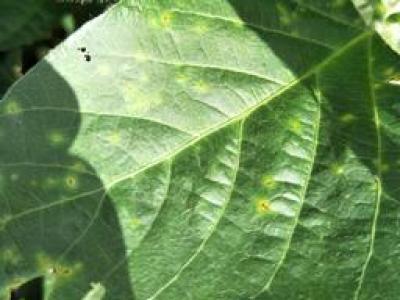Image Processing

This dataset is derived from Sentinel-2 satellite imagery.
The main goal is to employ this dataset to train and classify images into two classes: with trees, and without trees.
The structure of the dataset is 2 folders named: "tree" (images containing trees) and "no-trees" (images without presence of trees).
Each folder contains 5200 images of this type.
- Categories:
 440 Views
440 Views
This paper presents a deep learning model for fast and accurate radar detection and pixel-level localization of large concealed metallic weapons on pedestrians walking along a sidewalk. The considered radar is stationary, with a multi-beam antenna operating at 30 GHz with 6 GHz bandwidth. A large modeled data set has been generated by running 2155 2D-FDFD simulations of torso cross sections of persons walking toward the radar in various scenarios.
- Categories:
 13 Views
13 ViewsIn international contexts, natural scenes may include text in multiple languages. Especially, Latin and Arabic scene character image dataset is essential for training models to accurately detect and recognize text regions within real-world images. This is crucial for applications such as text translation, image search, content analysis, and autonomous vehicles that need to interpret text in different languages.
- Categories:
 373 Views
373 ViewsThis is the dataset used in the paper "Application of improved lightweight network and Choquet fuzzy ensemble technology for soybean disease identification". This data set contains 6 types of soybean disease leaves collected from Xiangyang Farm, Nengjiang Farm and Jiusan Farm of Northeast Agricultural University in Heilongjiang Province from early June to late September 2019. All images are collected in natural scenes. A total of 1620 disease images of soybean leaves were collected.
- Categories:
 465 Views
465 ViewsThe presented dataset encompasses a diverse collection of road images captured under a multitude of environmental conditions, specifically sourced from Tunisian highways. Comprising textual annotations in two languages, this dataset is tailored to facilitate research and development in the domain of scene understanding, language processing, and bilingual context analysis. The collection includes 2006 word pictures with Latin and Arabic text occurrences that were taken from 3000 road scene images. The dataset's versatility enables investigations into the robustness of lang
- Categories:
 124 Views
124 ViewsThe presented dataset encompasses a diverse collection of road images captured under a multitude of environmental conditions, specifically sourced from Tunisian highways. Comprising textual annotations in two languages, this dataset is tailored to facilitate research and development in the domain of scene understanding, language processing, and bilingual context analysis. The collection includes 2006 word pictures with Latin and Arabic text occurrences that were taken from 3000 road scene images. The dataset's versatility enables investigations into the robustness of lang
- Categories:
 43 Views
43 ViewsSAR-optical remote sensing couples are widely exploited for their complementarity for land-cover and crops classifications, image registration, change detections and early warning systems. Nevertheless, most of these applications are performed on flat areas and cannot be generalized to mountainous regions. Indeed, steep slopes are disturbing the range sampling which causes strong distortions in radar acquisitions - namely, foreshortening, shadows and layovers.
- Categories:
 472 Views
472 ViewsIn contemporary digital environments, the development of a high-resolution synthetic Latin character dataset holds paramount significance across various real-world applications within the domains of computer vision and artificial intelligence. This relevance extends from tasks such as image restoration to the implementation of sophisticated recognition systems.
- Categories:
 526 Views
526 Views






